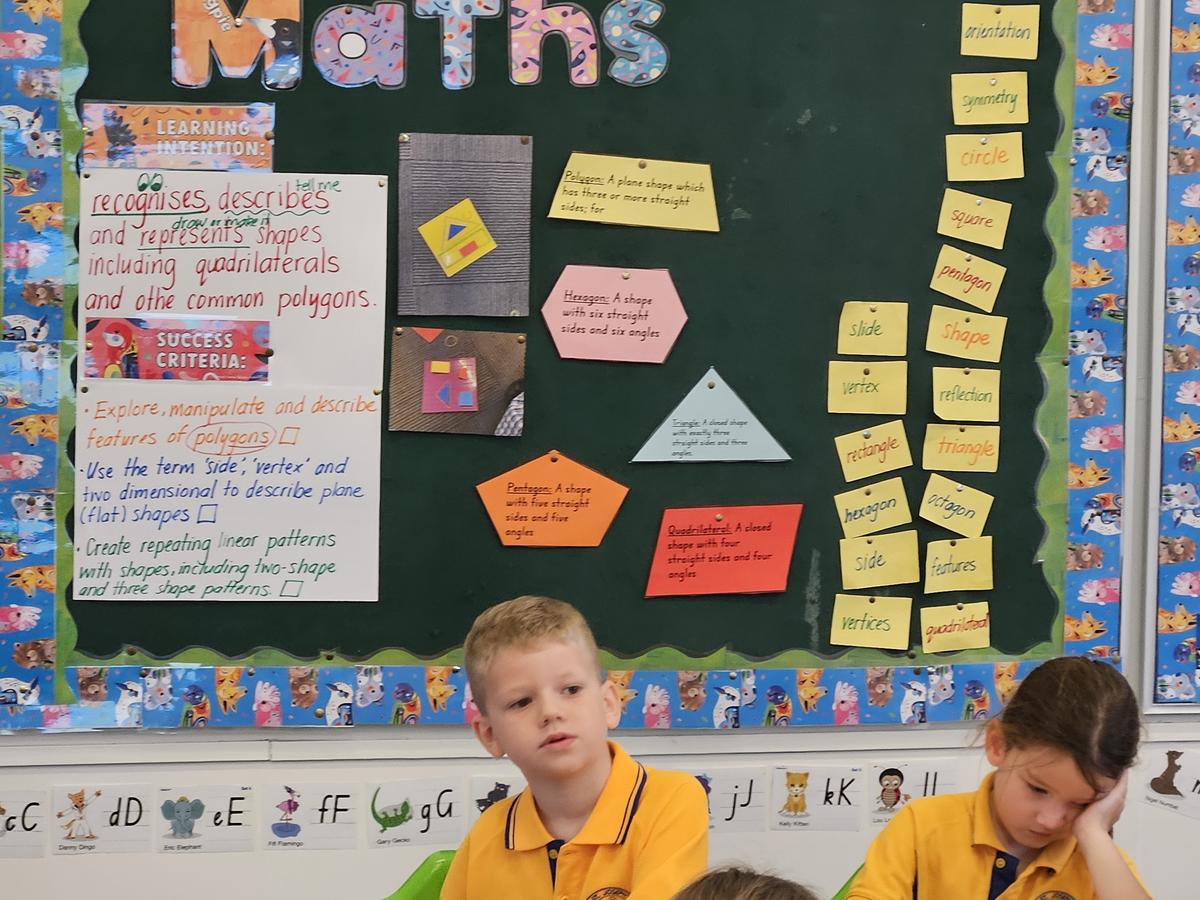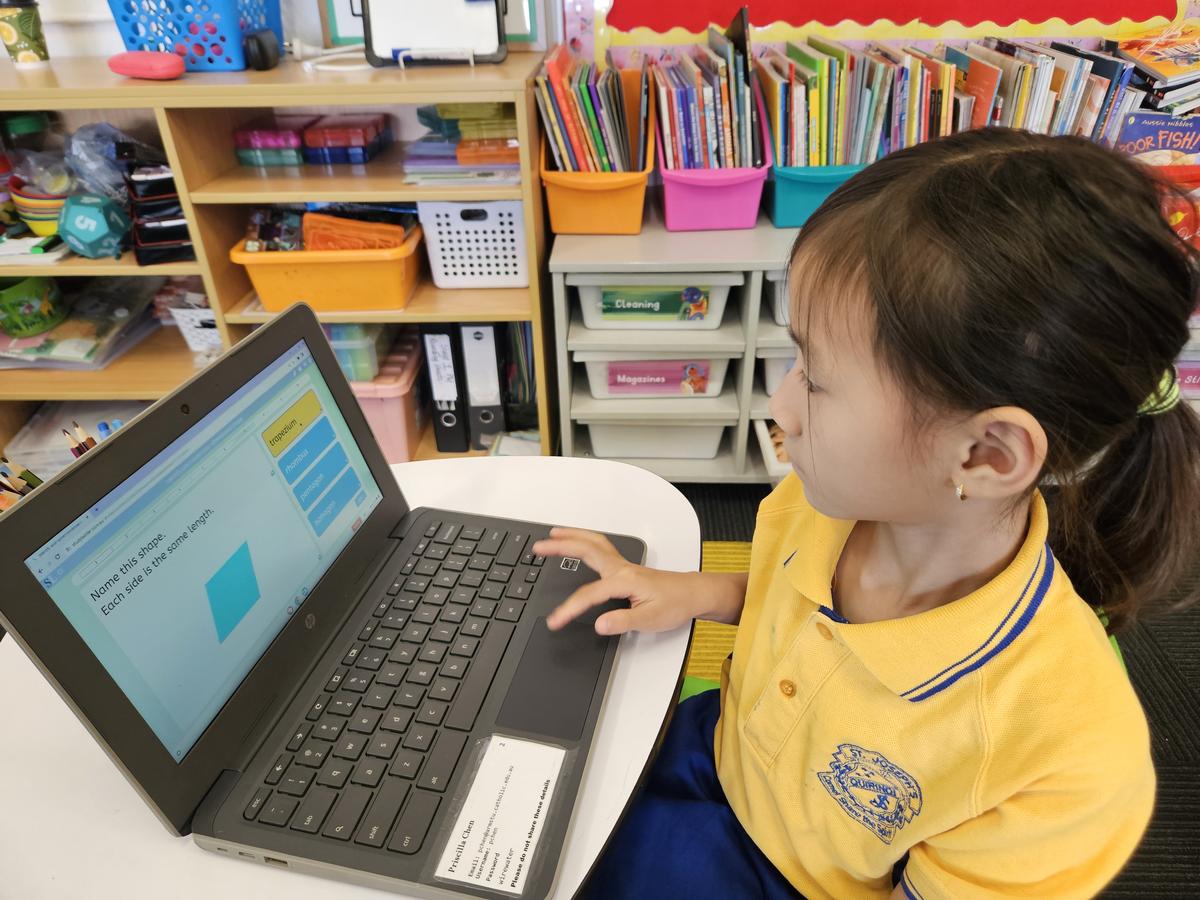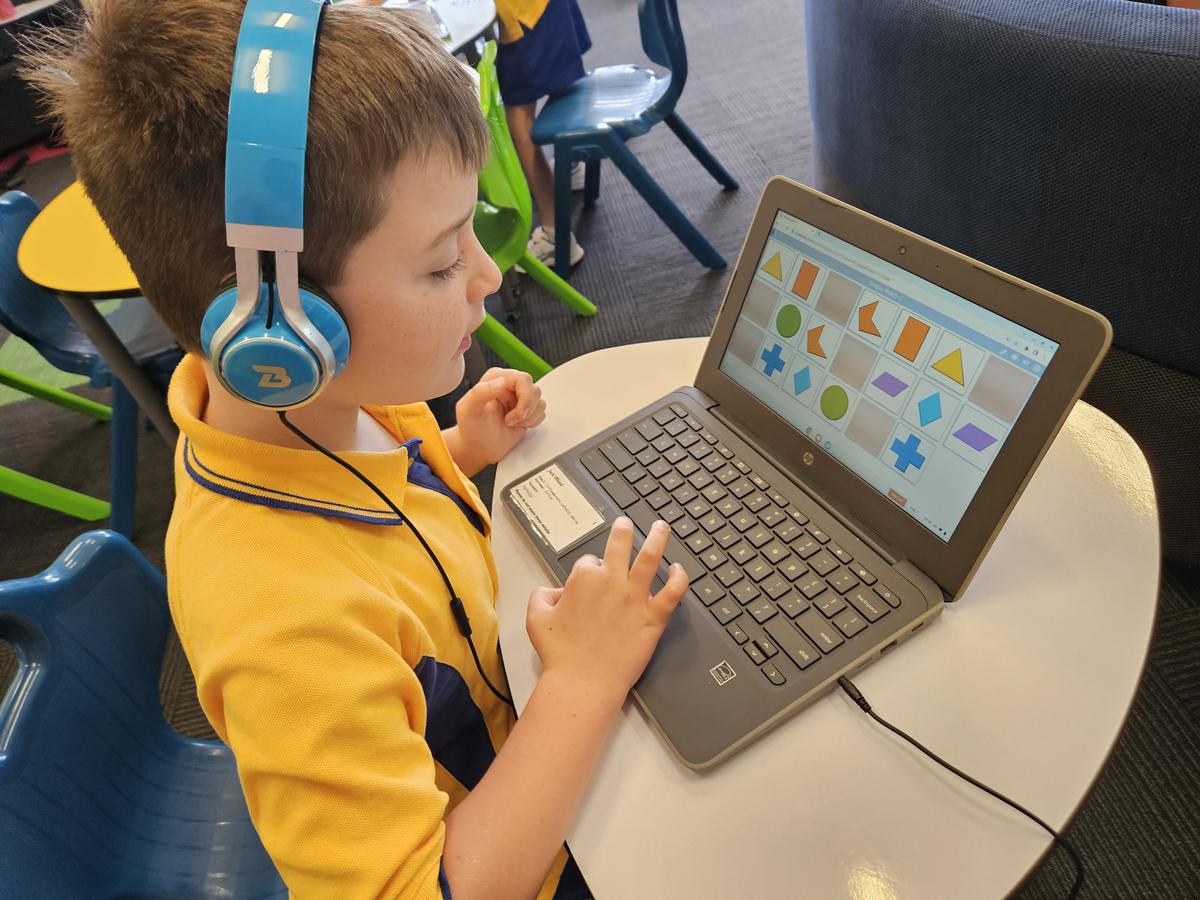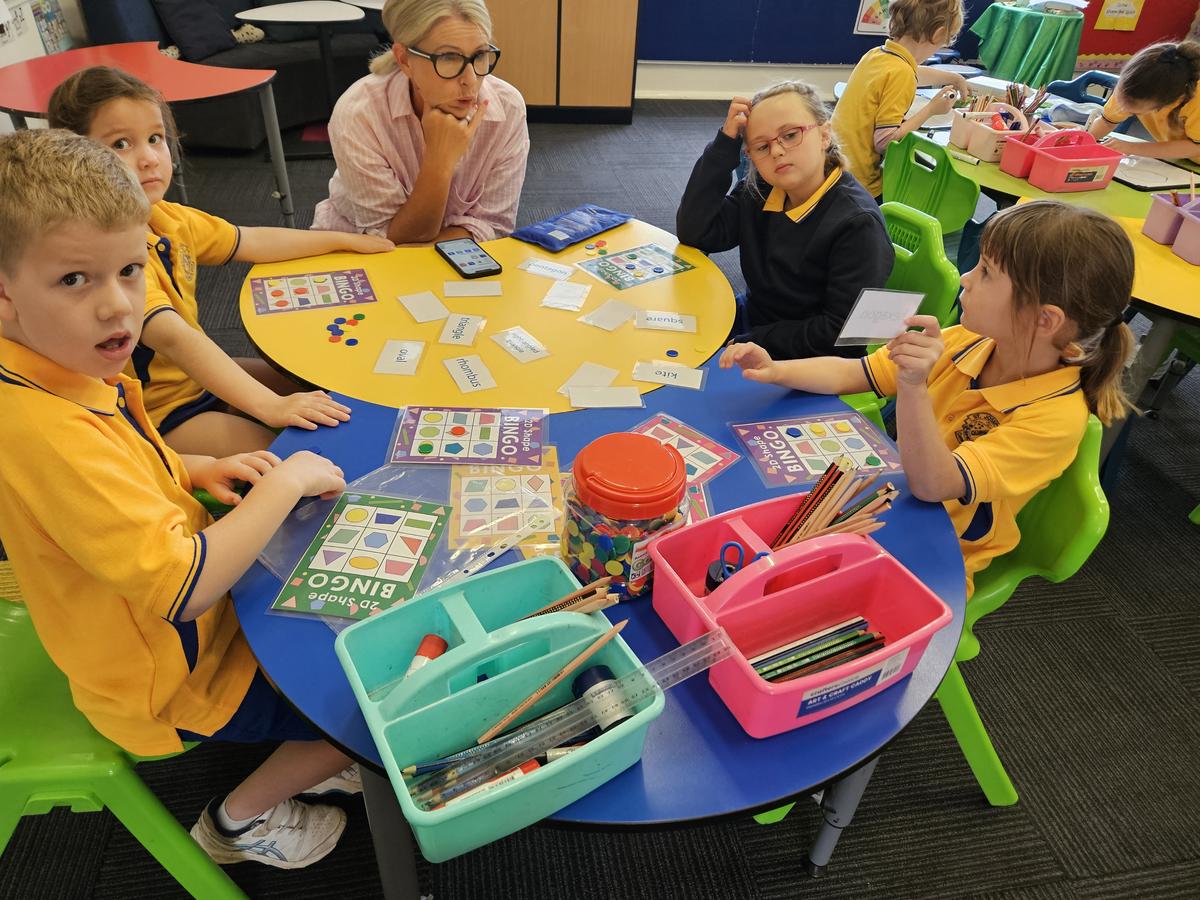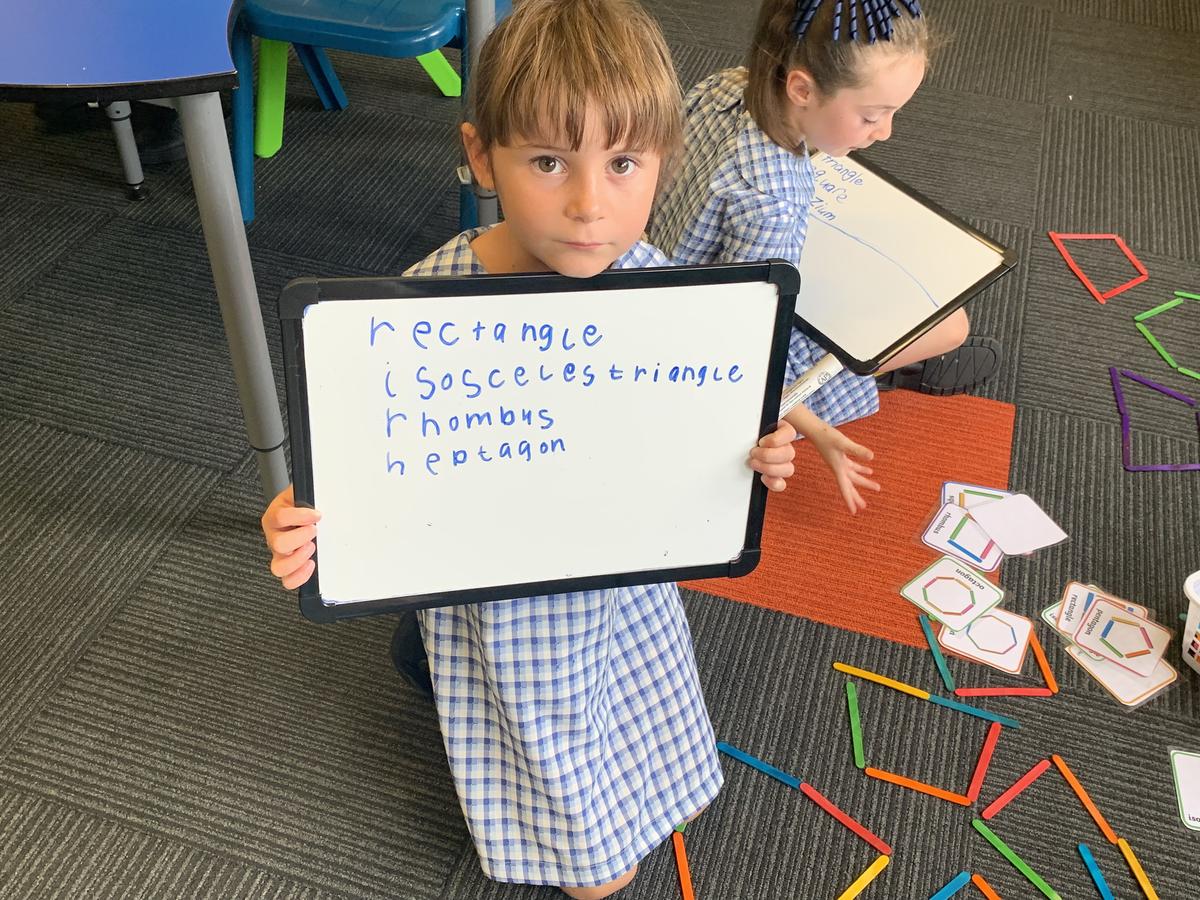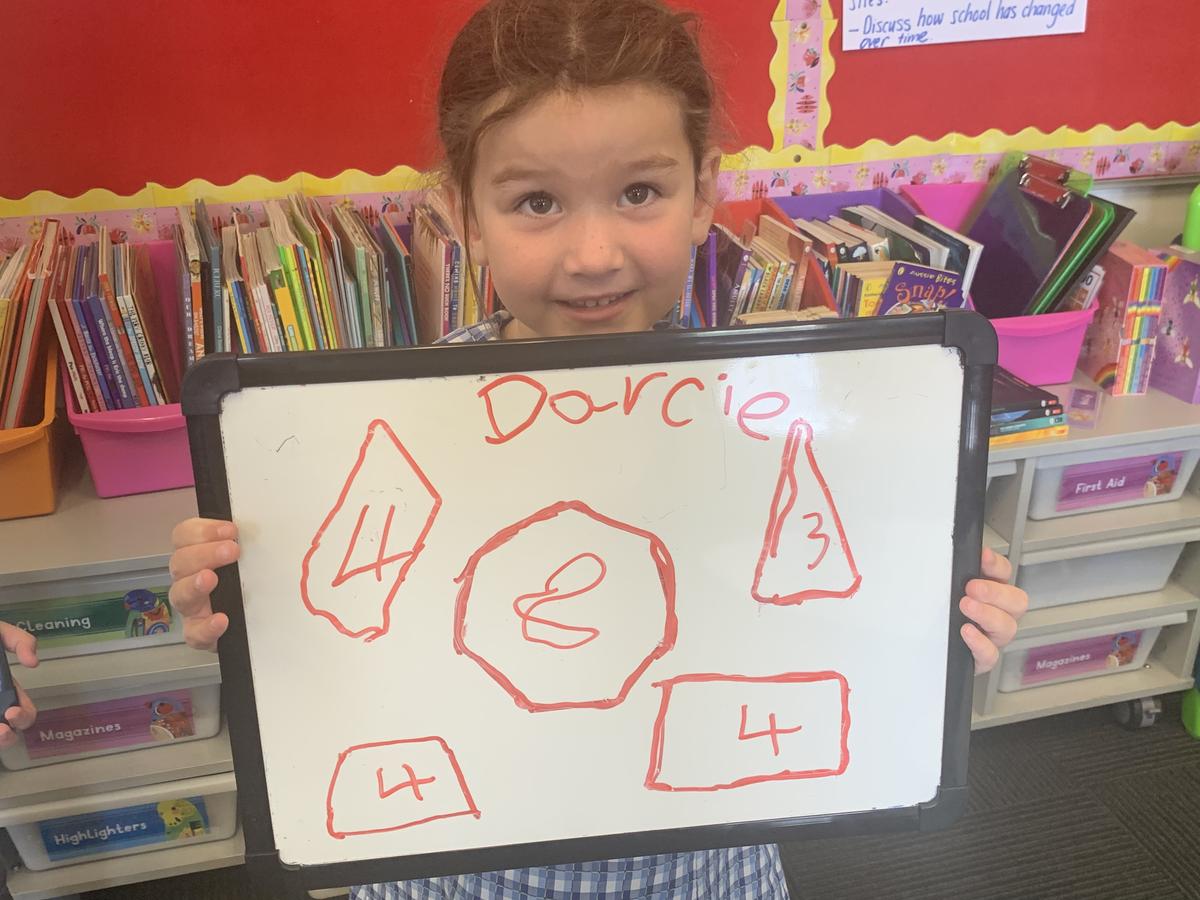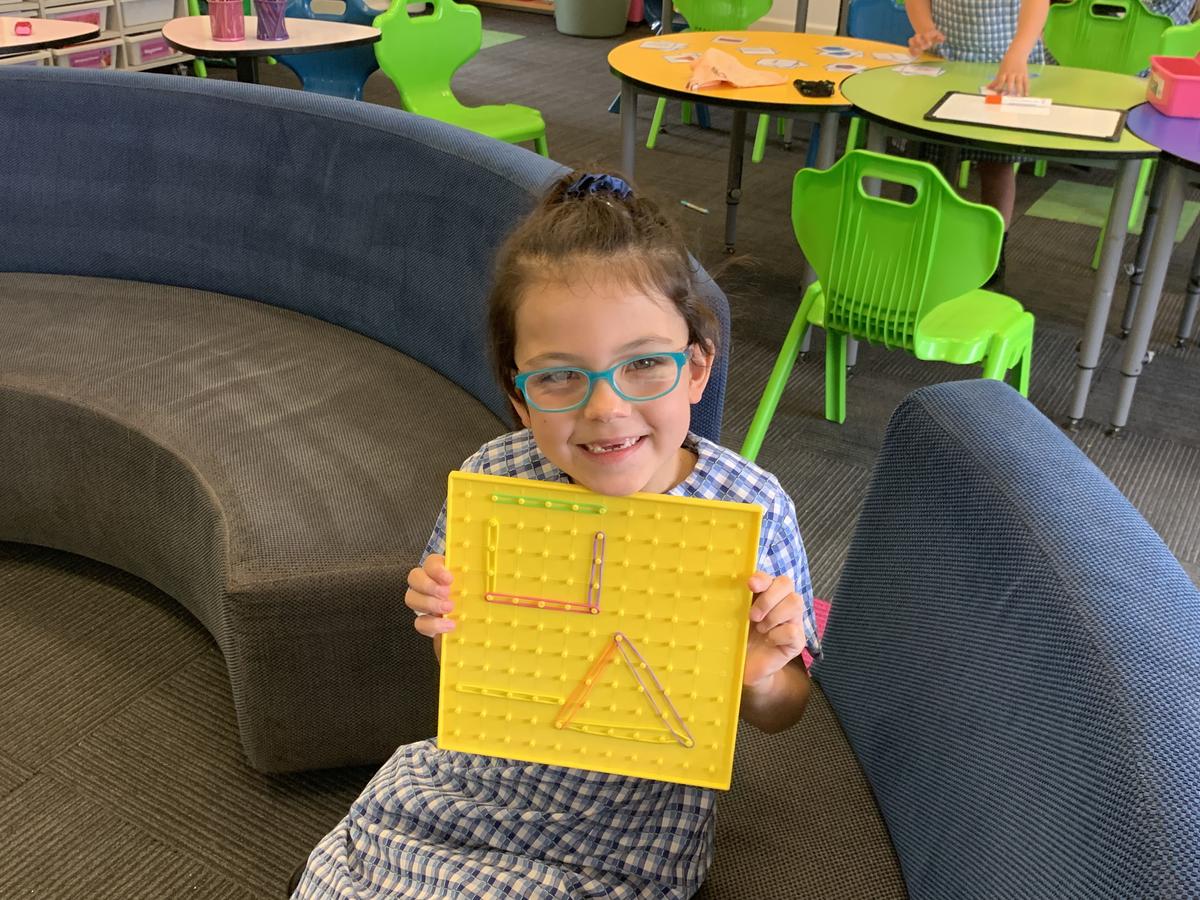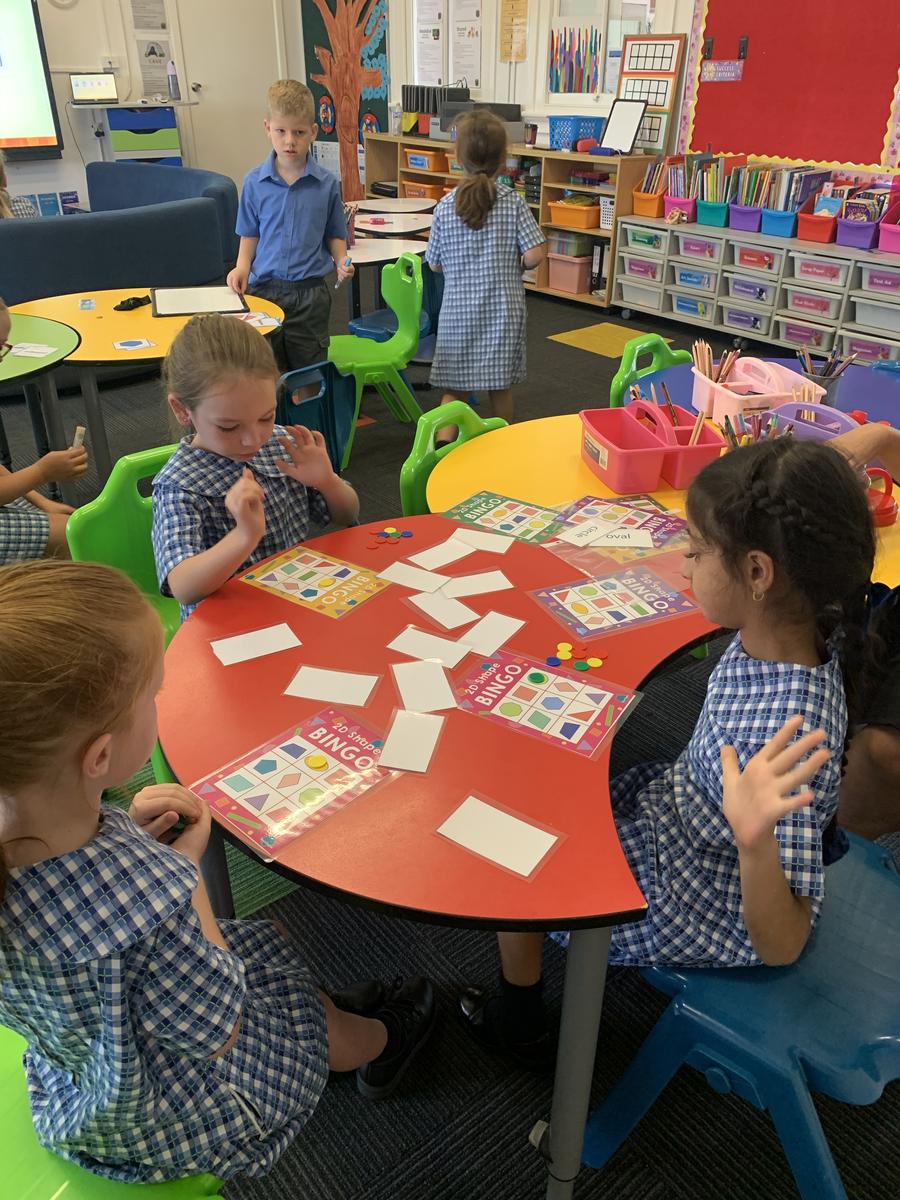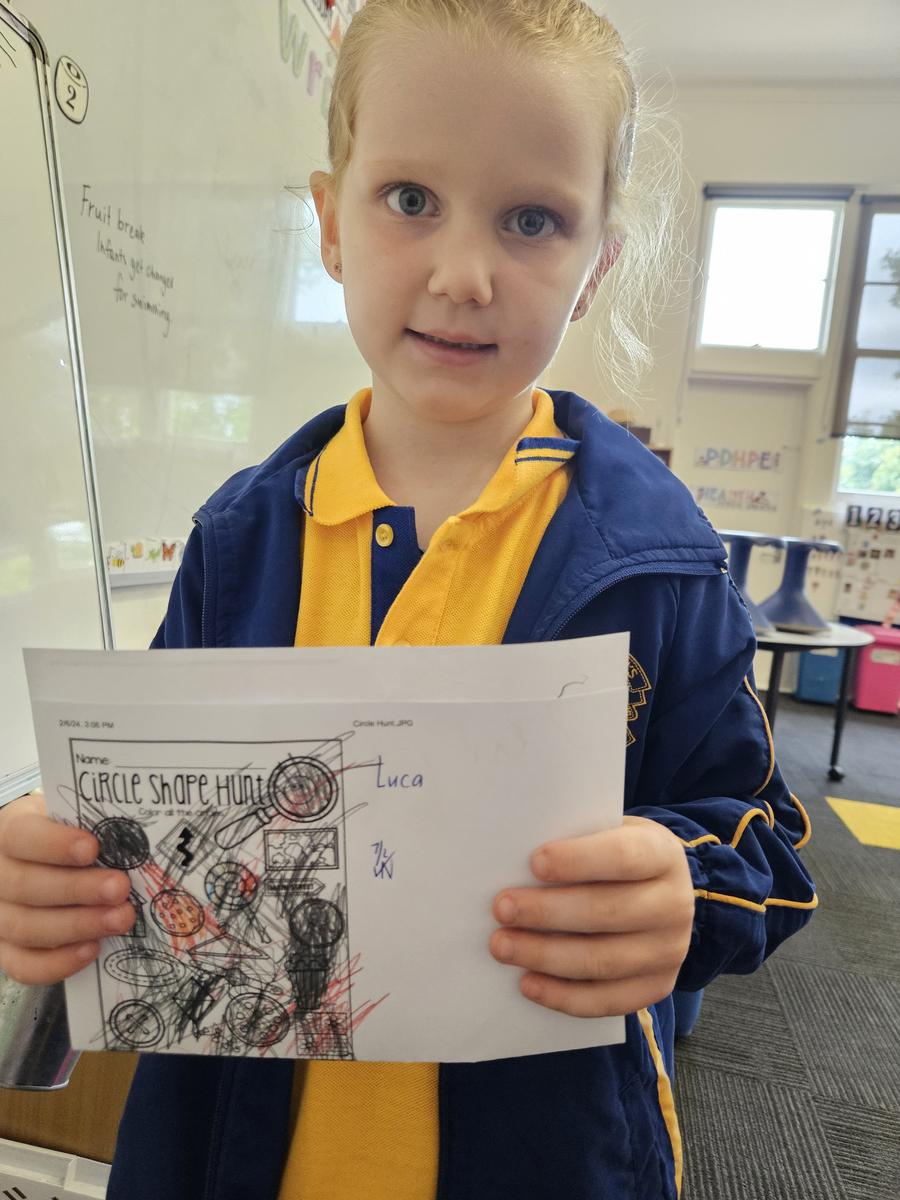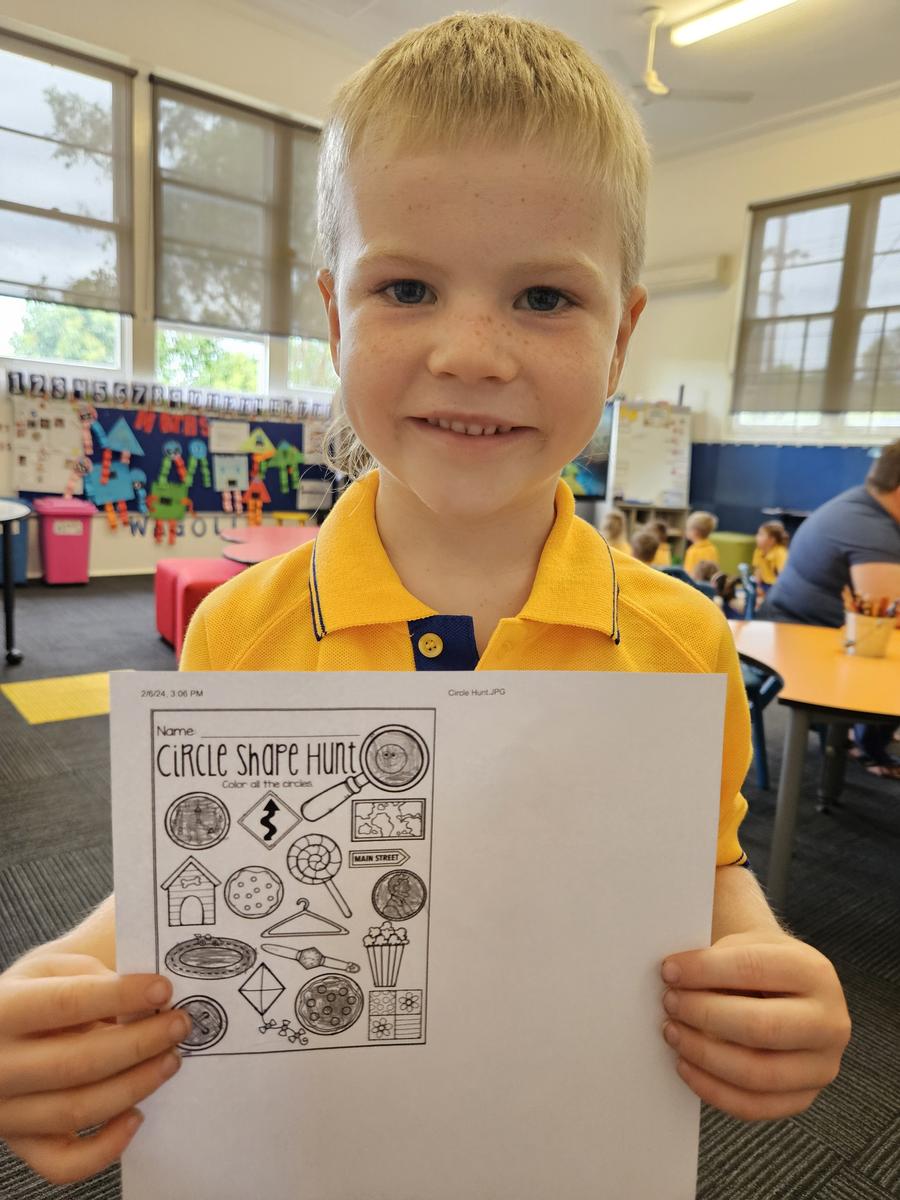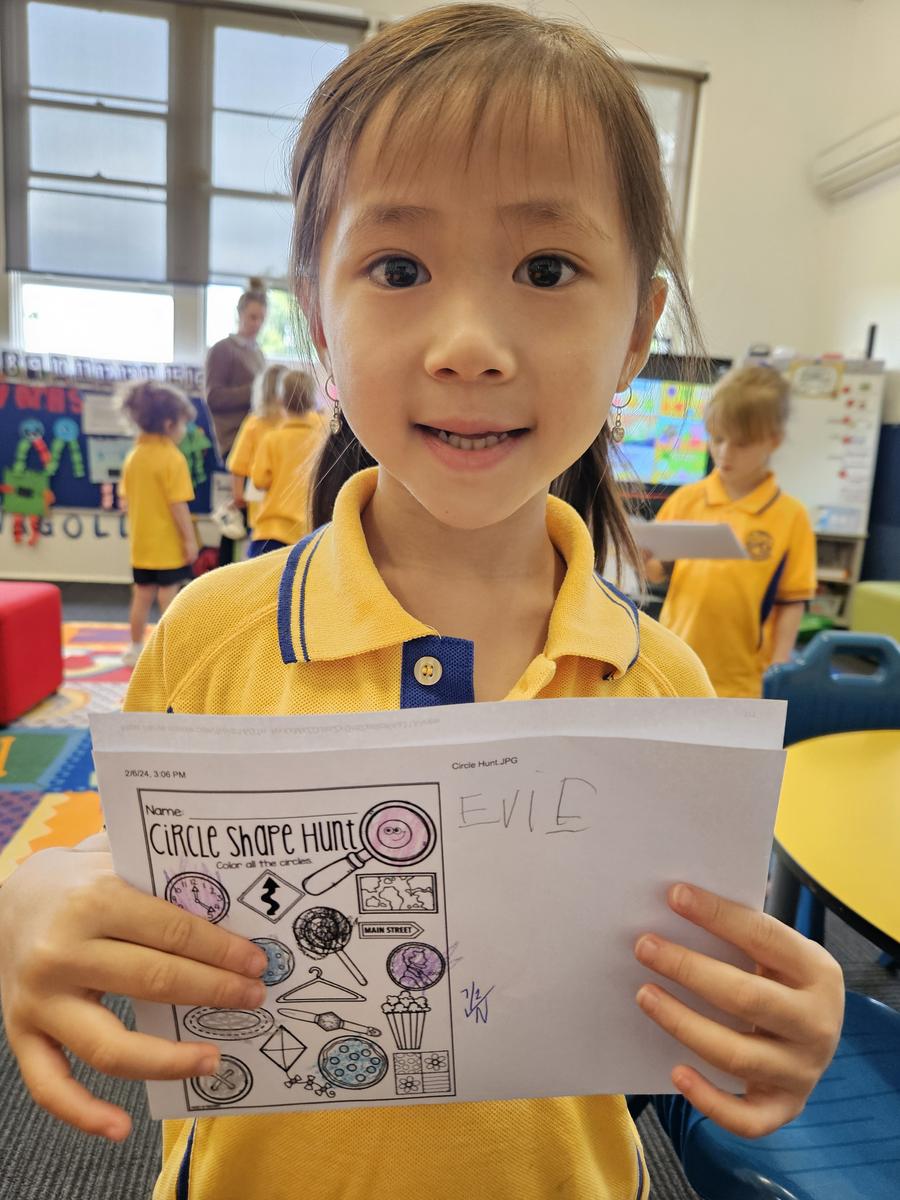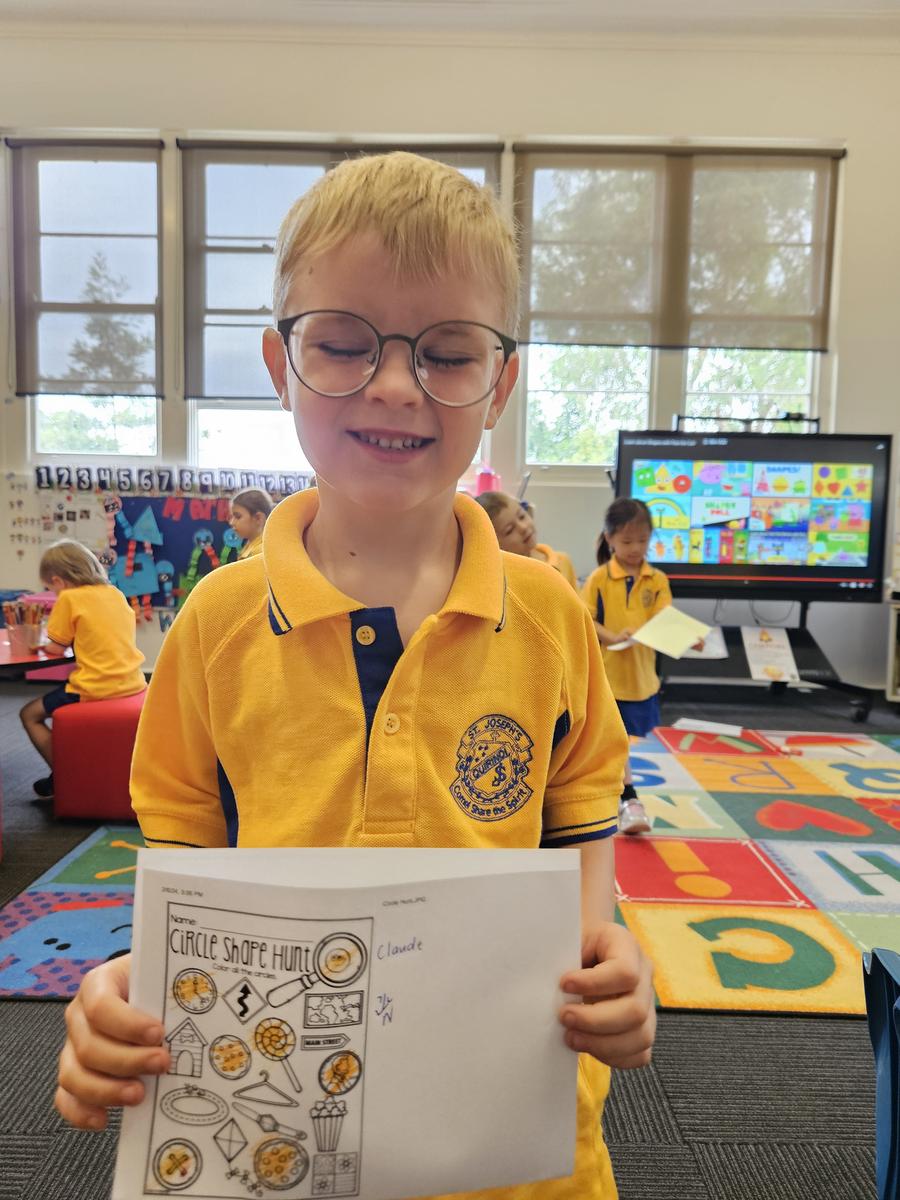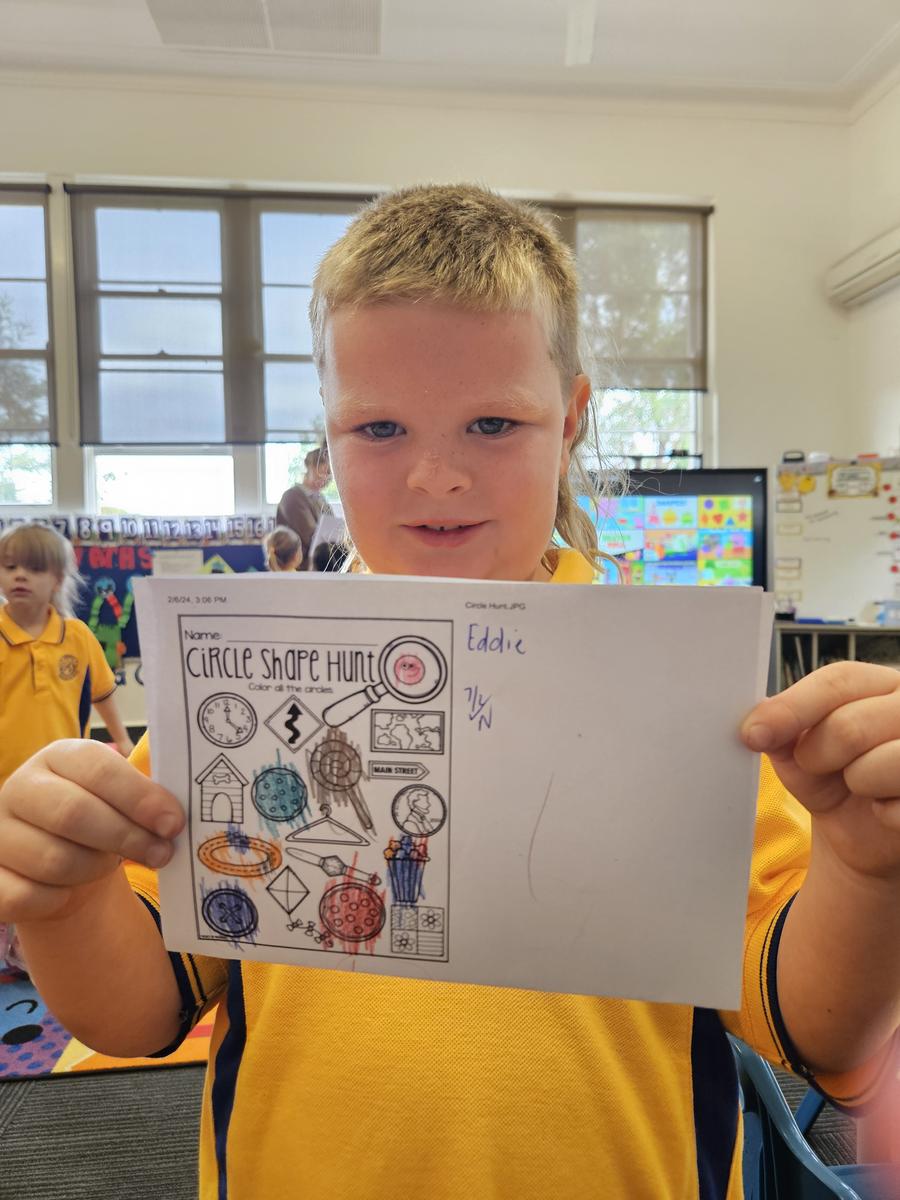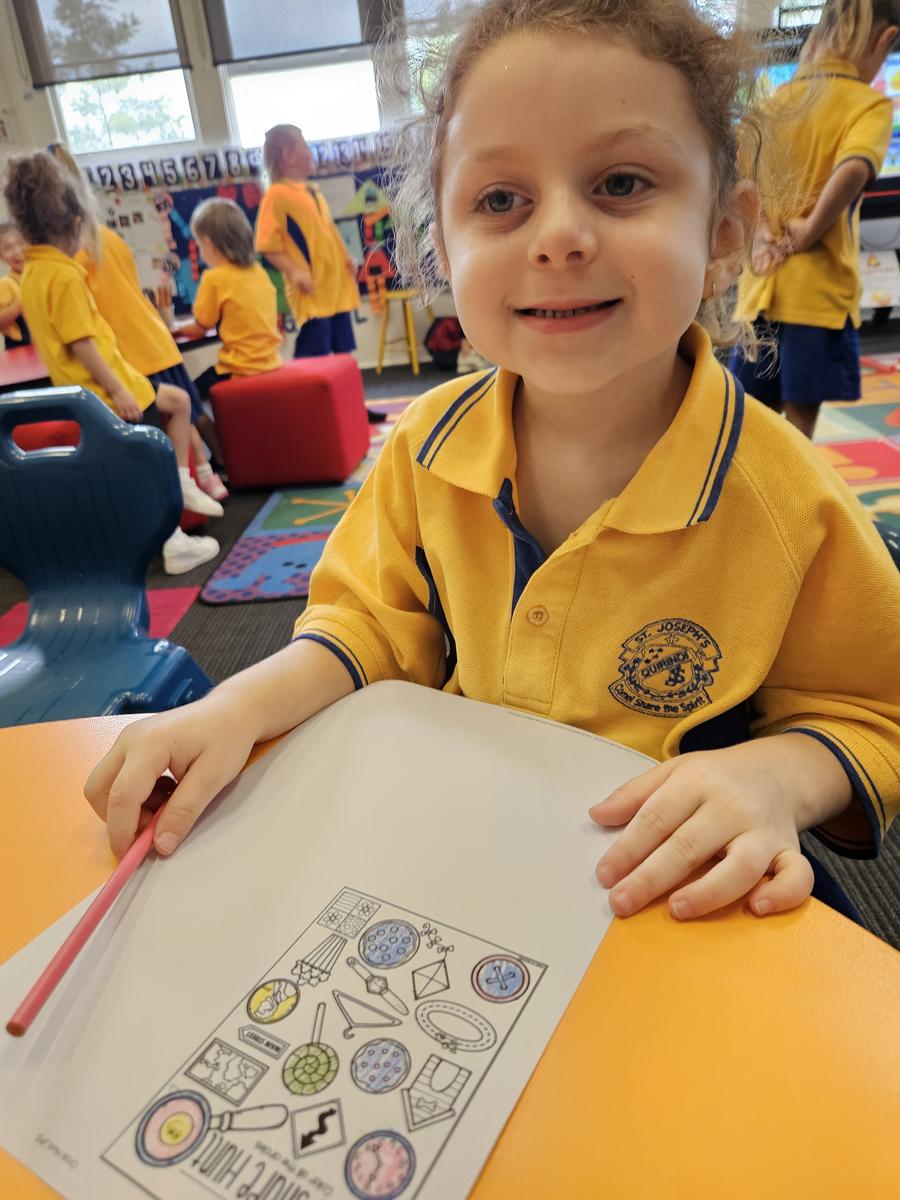Mathematics
Mrs Robyn Wilson - MaST - Mathematics Specialised Teacher
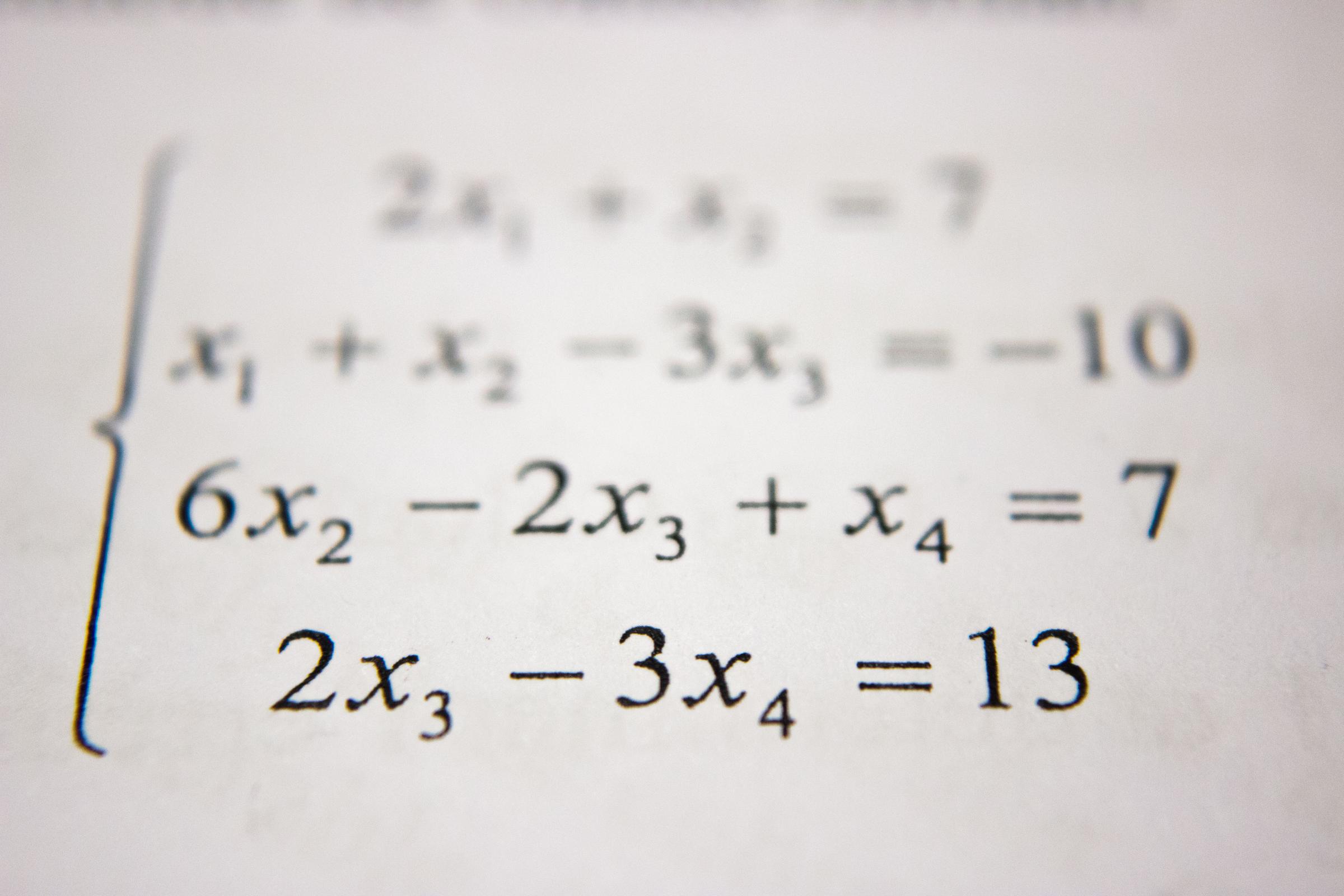
Mathematics
Mrs Robyn Wilson - MaST - Mathematics Specialised Teacher
From octagonal stop signs and rectangular doors, to triangular roofs and circular wheels—shapes are everywhere.
Learning about shapes helps children identify and organise information visually, recognise signs and symbols and develop an awareness of the relationship between people, objects and the space around them.
Recognising and using shapes in the everyday and describing them, using everyday language, is foundational in developing the concepts required for measurement and geometry. Children demonstrate their growing understanding of these concepts through opportunities to organise shapes to create patterns, structures and artworks.
Learning about shapes supports children to:
Below we can see the Infants children learning about 2D shapes in class.
